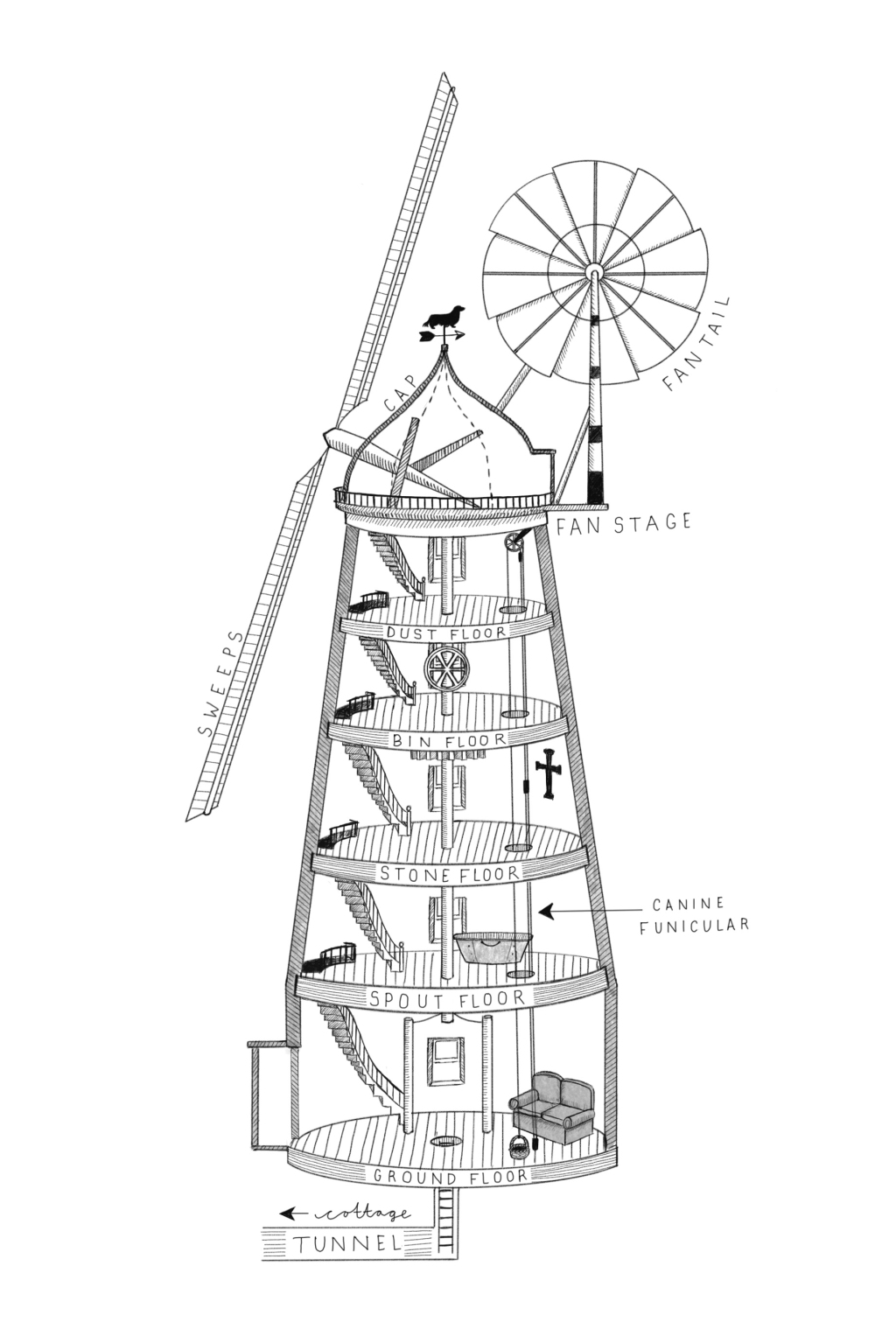Detail is everything: the interior of my fictional windmill
If asked to break down writing a novel into 3 areas you’d probably say: plot, character and place. Many writers spend vast amounts of time on the first two, but neglect the third. Big mistake. Setting isn’t just a backdrop for action.
Setting creates mood, meaning, resonance. It does a lot of invisible work. It embodies your themes, deepens them, and also CREATES THEM. Think about the moors in Wuthering Heights, or that attic in Jane Eyre.
Settings can be characters in their own right: in Daphne Du Maurier’s Rebecca, Manderley is basically the main character.
Place, when done well, makes a book feel REAL to the reader.
Settings aren’t just fixed spaces to be described, they’re malleable entities, and novelists can consciously manipulate them. The Cobb at Lyme in Persuasion is very different from the Cobb at Lyme in The French Lieutenant’s Woman.
How I choose my settings:
I need to feel really strongly about a place because I know I’m going to be living in it for a long time. I think I choose a setting for one of two reasons: Either I feel strongly about it, or I am interested in it in some obscure but powerful way.
Four Questions to ask yourself when thinking about where to set a novel:
1/ Where do I long to be?
2/ What place has deep meaning for me?
3/ What place do I never want to visit again?
4/ What place do I have really mixed feelings about?
TIP: DO YOUR RESEARCH.
Go there. Walk around. Note smells, feel, details (among other things, I went on two Oxford ghost tours while writing Magpie Lane)
Go there virtually if you can’t physically. Use streetview etc
Get info: endless Googling is your friend.
Five things to bear in mind as you write each scene:
Surroundings – think about what aspects fit your themes in this scene?
Seasons and weather – make conscious choices – eg. Venice in winter.
Specific Visuals – what can your characters see from where they are? This roots them. Make them notice things that reflect the mood of the scene!
Sounds, smells, sensations (ditto)
Significance of the place – cultural, political (you may never reference this directly)
3 Tips for writing about place:
1/ Don’t over-describe – just pick a few key things to focus on. You don’t have to tell us everything about a place. But…
2/ Pick these details carefully because they’re meaningful, not just because you wrote something poetic
3/ Watch out for cliche – if you’re going to have a climactic storm, know you’re doing something that’s been done before and make sure you do it differently in some way
Two exercises to help you get your head around why settings matter:
1. Write a short scene in your chosen setting.
Now re-write it, changing the weather. What else changes because of that?
2. Write a short scene about a trauma – make the setting dark/alarming.
Now re-write the same scene, putting the characters in an idyllic setting. How does it change?

Leave a comment